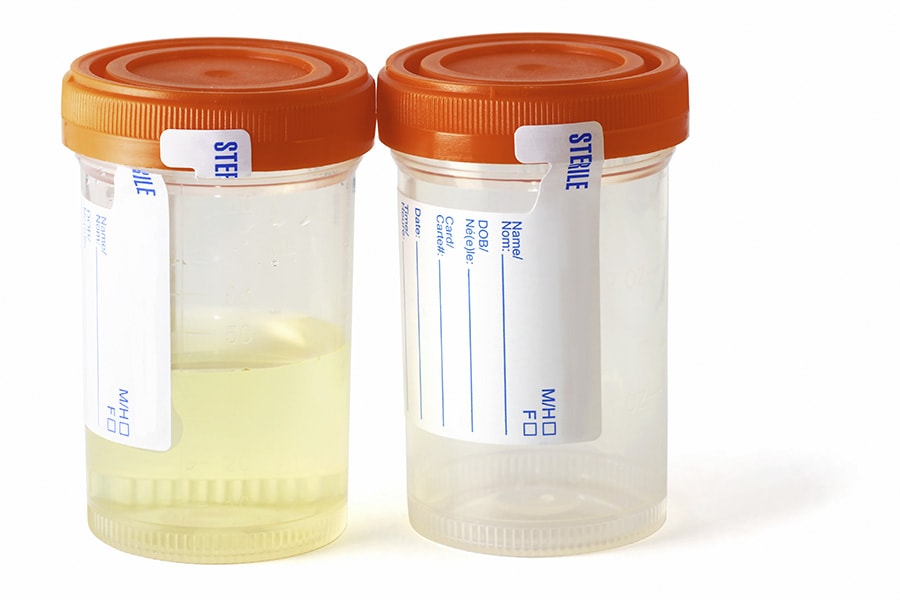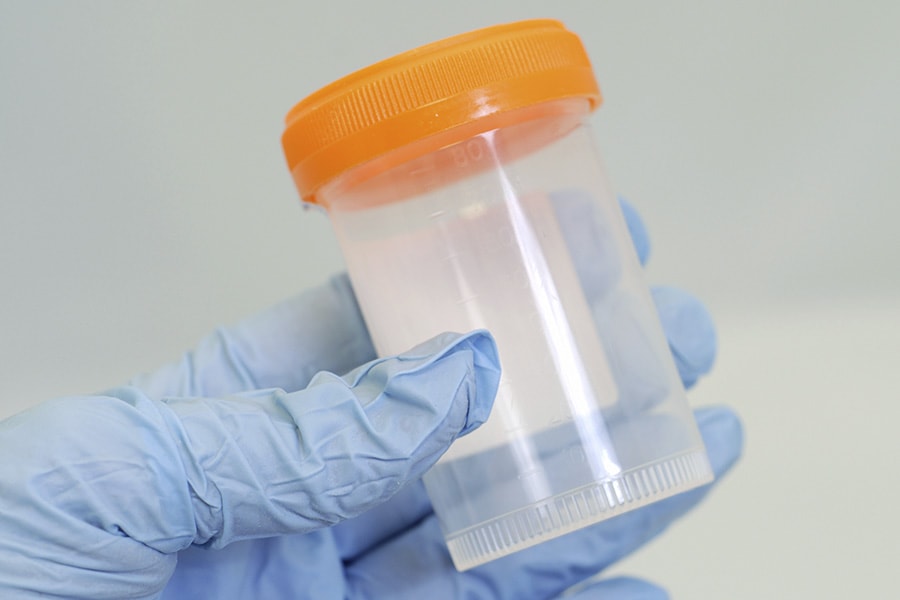Urine Drug Testing
Around 21.5 million Americans suffer from substance use disorders, and approximately 90% of them go untreated.
On average 43,982 people die every year due to drug overdoses, amounting to a shocking 120 deaths per day. Overdose deaths, especially from prescription drugs and heroin, have reached alarming levels and addiction professionals are concerned to say the least. Clinical recommendations are quickly emerging in an attempt to alter these disturbing statistics. For example, urine drug testing has long been used as a therapeutic device in addiction medicine, but use has been largely unstandardized. There is a significant lack of clinical knowledge surrounding this method of testing, which has led to a lack of comprehensive guidelines and sometimes even unethical behaviors. Now, professionals are coming together to establish clinical consensus recommendations in order to regulate utilization and ultimately save more lives.
Why is urine drug testing done?
Drug testing is done to identify the presence, absence, and/or concentration of specific substances and metabolites in the human body. These results should be used exclusively for therapeutic purposes in addiction medicine, including preventing or deterring use, identifying or diagnosing use, supporting abstinence in active treatment and chronic care management, identifying early relapse, and creating an external locus of control in the early stages of care. There are currently two types of urine drug testing methods: presumptive testing and definitive testing.
What types of urine drug testing exist?
Presumptive urine drug testing
Presumptive testing uses immunoassay techniques to look for the presence or absence of general drug classes and a few specific drugs. It uses simple technology (cup, strip, dip, cassette, analyzer) and produces rapid, semi-quantitative values. False positives and negative results are more likely, as the method has low sensitivity and high cut-off values. It is also possible to alter the results to hide drug use via adulteration. Because of these fairly non-specific and potentially alterable results, presumptive testing should be used as a screening device but not a decisive, diagnostic exam.
Definitive urine drug testing
Definitive testing uses chromatography-mass spectrometry, implementing complex technology with high sensitivity and specificity. This technique is named for its definitive results, as it identifies specific drugs and metabolites as well as their absolute concentrations. False positives and negative results are therefore unlikely due to the technology’s high sensitivity and low cut-off values. It is fairly difficult to hide drug use via adulteration with this method, and results are finalized after 24-72 hours.
Definitive testing is reasonable and necessary in many circumstances. It is an effective way to identify specific drugs within a drug class, to identify a specific substance or metabolite that is not detected or is inadequately detected by a presumptive test (such as fentanyl, meperidine, or synthetic cannabinoids), and/or when a definitive concentration of a drug is needed to guide management (for example, when discontinuing use of THC). It should be used to identify non-prescribed medication or illicity substance use for ongoing safe prescribing of controlled substances, and for use in a differential assessment of medication efficacy, side effects, or drug-drug interactions. It should also be used when a presumptive test result is inconsistent with a patient self-report, presentation, medical history or current prescribed treatment plan.
When is urine drug testing necessary?
When deciding whether or not a urine drug test is necessary, clinicians should consider the patient’s indicators of risk. These risk factors include reports from self and others, new stressors, mood/behavior changes, unexplained symptoms (like weight loss or constipation), personal/family history substance use, access to commonly abused medications, adolescence, women who are/could be pregnant, history in the critical justice system, and/or other factors generally consistent with the American Society of Addiction Medicine’s definition of addiction. Clinicians should choose their testing method based on the needs dictated by the patient’s history, presentation, community factors, and treatment plan goals. It is also important to balance test quality with cost when making a plan. Clinicians should be sure to understand the benefits and limitations of the different testing methods before ordering a test; what may start as an attempt to reduce costs may instead actually increase costs while worsening the health of the patient. For greater clinical confidence, clinicians may consult with lab toxicologists/clinical pharmacists or a medical review officer. Clinicians should also obtain proper training in administration and interpretation of results before utilizing any urine drug testing method. Each test should be thoroughly documented in the patient’s medical record and notes should include rationale for the type and timing of the test. Later, a full review of the results should be added, including how the test supports a continuing current care plan and how the care plan will change due to the results.

Universal and routine clinical screening for substance use should ideally be conducted in various health settings, since early diagnosis can lead to improved outcomes. Doing this could decrease the stigma of urine drug testing and addiction, reduce profiling (including pregnant women), reduce the costs of untreated substance use disorders and, of course, improve health outcomes. If clinicians in primary care, obstetrics, peri-operative, etc. utilize urine drug testing, they can conduct a complete history and physical and continue testing as necessary to monitor future use. Patients should be assessed for substance use during their first consult with any specialty of doctor, and should be assessed periodically thereafter. Substance use alone is insufficient to substantiate the presence of a substance use disorder, though urine drug testing can be instrumental in diagnosing the disorder if positive tests are accompanied by other factors, such as evidence of use or indicators of risk. If results indicate abstinence, routine follow-ups should occur annually. Presumptive testing should generally be used if no risks are identified, otherwise definitive testing may be the appropriate option. If risks are identified, presumptive testing should only be used as necessary to obtain immediate results due to specific clinical indications.
When should treatment clinicians conduct urine drug testing?
During the active treatment of substance use disorders, clinicians should conduct urine drug testing on a regular basis and at random intervals. The aim of the urine collection process should be to reduce the patient’s ability to alter the test results in any way. The same quality of care should be given to patients in all settings: offices, methadone clinics, etc. For duration of abstinence 0-30 days, patients should submit to testing 1-3 times per week, and at least one of these tests should be done using definitive methods. For duration of abstinence 31-90 days, patients should submit to testing once per week, and at least one of these tests should be done using definitive methods. For duration of abstinence 91 days – 2 years, patients should submit to testing 1-3 times per month, and at least one of these tests should be done using definitive methods. If results indicate use at any stage of treatment, clinicians should resume testing 1-3 times per week as they would do for a period of abstinence of 30 days or less. Additional testing may be indicated with appropriate documentation. The clinician should consider testing to ascertain the nature and extent of relapse usage, and may need to intensify treatment and monitoring.
Once patients have achieved 2+ years of abstinence, they are likely to be self-directed in recovery and need a less prescriptive, more individualized testing schedule. Testing should still occur on a regular basis and at random intervals. If the test is positive the clinician should establish an active treatment plan appropriate to recent use. If the duration of abstinence is 2-5 years then definitive quantitative testing should occur at least once per year, assuming ongoing abstinence. If the duration of abstinence is over 5 years, then definitive quantitative testing should occur on a timeline based on clinical considerations. Again, if results indicate use at any stage of treatment then the 0-30 day abstinence-testing schedule should be resumed.
In conclusion
Urine drug test results should be implemented into each individual’s treatment plan to support continuation of care. Results can be used to counsel and educate each patient about the use of medications and/or illicit drugs, and may dictate whether or not certain prescribed medications should be changed, modified, continued, or discontinued. Additional tests may be ordered based on results as part of a differential assessment of treatment efficacy, side effects, or drug interactions. Results can also indicate that patients need to be referred for further evaluation and/or to rule out substance use disorders. The regulation of urine drug testing may seem like it’s just a small alteration to the field of addiction medicine, but it has the potential to save and better lives on a global scale if implemented correctly.
Sources Cited:
Barthwell, Andrea. “Appropriate Urine Drug Testing in Substance Use Disorders: Clinical Consensus Recommendations” PowerPoint presentation. Two Dreams, Oak Park, IL. 22 Aug 2015.
